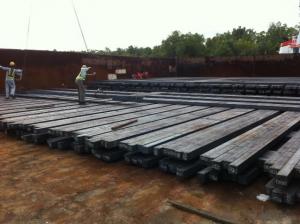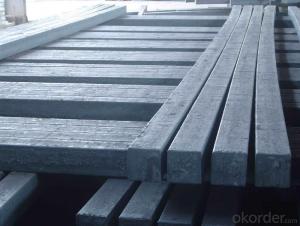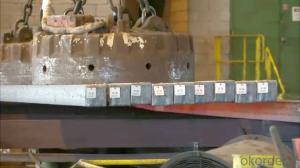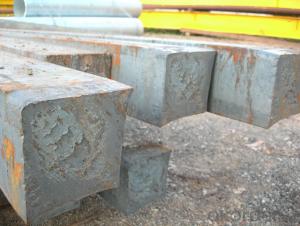Z39 BMP Rolled Steel Coil Construction Roofing Construction
- Loading Port:
- Tianjin
- Payment Terms:
- TT OR LC
- Min Order Qty:
- 100 m.t.
- Supply Capability:
- 10000 m.t./month
OKorder Service Pledge
OKorder Financial Service
You Might Also Like
Structure of Z39 BMP Rolled Steel Coil Construction Roofing Construction 
Description of Z39 BMP Rolled Steel Coil Construction Roofing Construction
PPGI is made by cold rolled steel sheet and galvanized steel sheets as baseplate, through the surface pretreatment (degreasing, cleaning, chemical conversion processing), coated by the method of continuous coatings (roller coating method),
and after roasting and cooling. Zinc coating: Z60, Z80, Z100, Z120, Z180, Z275, G30, G60, G90
Alu-zinc coating: AZ60, AZ80, AZ100, AZ120, AZ180, G30, G60, G90
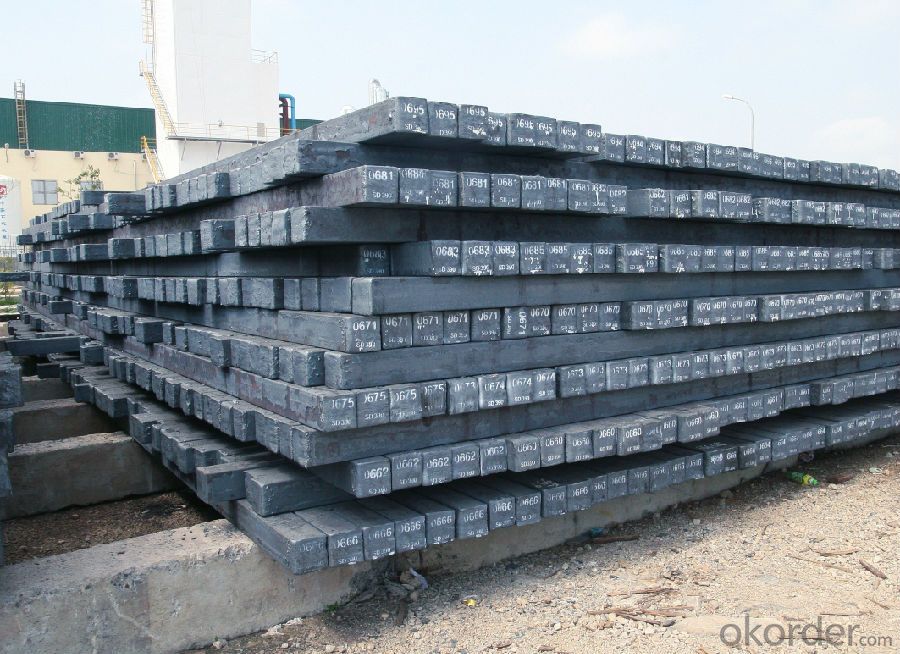
Main Feature of Z39 BMP Rolled Steel Coil Construction Roofing Construction
1) Excellent corrosion resistance: The zinc layer provides a good protection of Pre-painted Galvanizeed Steel Sheet.
2) High heat resistance: The reflective surface of the material aids in efficiently reflecting the sunlight away and in turn reducing the amount of heat transmitted. The thermal reflectivity converts into energy savings.
3) Aesthetics: Pre-Painted Galvanized steel sheet is available in plethora of patterns and multiple sizes as per the requirements that given by our customers.
4) Versatility: can be used in the various areas.Standard seaworthy export packing: 3 layers of packing, inside is kraft paper, water plastic film is in the middle and outside GI steel sheet to be covered by steel strips with lock, with inner coil sleeve.
Applications of Z39 BMP Rolled Steel Coil Construction Roofing Construction
1. Construction and building: roofing; ventilating duct; handrail; partition panel;etc.
2. Electric appliance: refrigerator; washing machine; refrigerator; DVD;etc.
3.Transportation: oil tank; road sign; etc.
4.Agriculture:barn; etc.
5.Others:vending machine; game machine; etc.  Specifications of Z39 BMP Rolled Steel Coil Construction Roofing Construction
Specifications of Z39 BMP Rolled Steel Coil Construction Roofing Construction
| Classified symbol | Yield Point Minimum N/mm2 | Tensile Strength Minimum | Elongation Minimum % | Application | ||||
| N/mm2 | Nominal Thickness mm (t) | |||||||
| JIS | Yogic | 0.25-0.4 | 0.4-0.6 | 0.6-1.0 | 1.0-1.6 | |||
| G3312 | specification | |||||||
| CGCC | CGCC | -205 | -270 | -20 | -21 | -24 | -24 | Commercial |
| CGCD | CGCD | --- | 270 | --- | 27 | 31 | 32 | Drawing |
| --- | CG340 | 245 | 340 | 20 | 20 | 20 | 20 | Structural |
| CGC400 | CG400 | 295 | 400 | 16 | 17 | 18 | 18 | Structural |
| CGC440 | CG440 | 335 | 440 | 14 | 15 | 16 | 18 | Structural |
| CGC490 | CG490 | 365 | 490 | 12 | 13 | 14 | 16 | Structural |
| CGC570 | CG570 | 560 | 570 | --- | --- | --- | --- | Structural |
| ASTM Designation | Yield Point Minimum | Tensile Strength Minimum | Elongation Minimum % | Application | Q/BQB 445-2004(China standard) | ASM A653/A653M | JISG 3312 | |
| ksi(MPa) | ksi(MPa) | TDC51D+Z | (CS TYPE A+Z) | CGCC | ||||
| A653(M)-99 CS TYPE A,B,C | --- | --- | --- | Commercial | TDC52D+Z | CGCD | ||
| A653(M)-99 FS | --- | --- | --- | Lock Forming | TS250GD+Z | (G250+Z) | - | |
| A653(M)-99 DS | --- | --- | --- | Drawing | TS300GS+Z | (G300+Z) | CGC 400 | |
| A653(M)-99 SS Grade33(230) | 33(230) | 45(310) | 20 | Structural | TS350GD+Z | (G350+Z) | CGC490 | |
| A653(M)-99 SS Grade37(255) | 37(255) | 52(360) | 18 | Structural | TS550GD+Z | (G550+Z) | CGC570 | |
| A653(M)-99 SS Grade40(275) | 40(275) | 55(380) | 16 | Structural | ||||
| A653(M)-99 SS Grade50(345) | 50(345) | 65(450) | 12 | Structural | ||||
| A653(M)-99 SS Grade80(550) | 80(550) | 82(570) | --- | Structural | ||||
FAQ of Z39 BMP Rolled Steel Coil Construction Roofing Construction
We have organized several common questions for our clients,may help you sincerely:
1. How Can I Visit There?
Our company is located in Tianjin City, China, near Beijing. You can fly to Tianjin Airport Directly. All our clients, from home or aboard, are warmly welcome to visit us!
2. How Can I Get Some Sample?
We are honored to offer you sample.
3. Why choose CNBM?
1, ISO, BV, CE, SGS approved.
2, Competitive price and quality.
3, Efficient service team online for 24 hours.
4, Smooth production ability(50000tons/month) .
5, quick delivery and standard exporting package.
6, Flexible payment with T/T, L/C, Paypal, Kunlun bank, etc .
- Q:How are steel billets used in the manufacturing of power transmission equipment?
- Power transmission equipment relies heavily on steel billets, solid blocks of steel that serve as vital raw materials. These billets are essential for the production of various parts and components. One key application of steel billets lies in the manufacturing of gears and shafts, which play a critical role in power transmission. Gears facilitate the transfer of rotational motion between components, while shafts are responsible for transmitting both motion and torque. To withstand the high forces and speeds associated with power transmission, steel billets are forged and machined into durable and robust gears and shafts. Moreover, steel billets are also utilized in the creation of structural elements like housings and frames. These components offer support and protection to internal mechanisms, ensuring the smooth operation of equipment. By employing techniques such as forging, cutting, and welding, steel billets are transformed into sturdy structures that can handle the intricate arrangements and dynamic forces present in power transmission systems. In conclusion, the significance of steel billets in the production of power transmission equipment cannot be overstated. They are integral in the fabrication of gears, shafts, and structural components, which are essential for the reliable and efficient operation of power transmission systems. The strength, durability, and precision of steel billets contribute significantly to the overall performance and longevity of such equipment.
- Q:How are steel billets cut and shaped into desired forms?
- Steel billets, which are essentially long, rectangular bars of raw steel, are cut and shaped into desired forms through a process known as steel billet shaping. This process involves several steps to transform the billets into different shapes and sizes, depending on the desired end product. The first step in shaping steel billets is to cut them into smaller, more manageable lengths. This is typically done using a sawing process, where the billets are cut using high-speed rotating blades. The saw blades can be either circular or bandsaw blades, depending on the specific requirements of the cut. Once the billets are cut into smaller lengths, they are then heated to a specific temperature in a furnace. This heating process is known as preheating and is essential for making the steel more malleable and easier to shape. The temperature and duration of preheating depend on the type of steel and the desired final shape. After preheating, the billets are transferred to a shaping machine, such as a rolling mill or a forging press. These machines exert high pressure on the heated billets to deform them into the desired shape. Rolling mills use a series of rollers to gradually shape the billets into various forms, such as bars, rods, or sheets. On the other hand, forging presses use immense force to reshape the billets by compressing them between dies or molds. During the shaping process, the billets may also undergo additional heat treatments, such as quenching or tempering, to enhance their mechanical properties. Quenching involves rapidly cooling the shaped billets to increase their hardness, while tempering involves reheating and slowly cooling them to improve their toughness and durability. Finally, once the steel billets have been shaped into the desired forms, they may undergo further processing steps, such as machining, grinding, or surface finishing, to achieve the required dimensional accuracy and surface quality. These additional processes ensure that the steel products meet the specified tolerances and surface requirements. In conclusion, steel billets are cut and shaped into desired forms by a combination of cutting, heating, shaping, and additional processing steps. This allows the raw steel material to be transformed into various products, ranging from bars and rods to sheets and other complex shapes, catering to the diverse needs of different industries.
- Q:What are the different welding techniques used for steel billets?
- Steel billets can be welded using various techniques, depending on the project's specific requirements and desired outcome. Some commonly used techniques include: 1. Shielded Metal Arc Welding (SMAW), also known as stick welding, is a versatile and widely used technique. It involves using a consumable electrode coated in flux, which shields the weld pool from atmospheric contamination. SMAW is suitable for both thick and thin steel billets and can be used in diverse applications. 2. Gas Metal Arc Welding (GMAW), also known as MIG welding, is a popular technique for welding steel billets. It utilizes a continuous wire electrode and a shielding gas to protect the weld pool. GMAW is known for its high productivity and is often employed for welding thin to medium steel billets. 3. Flux-Cored Arc Welding (FCAW) is similar to GMAW but utilizes a tubular electrode filled with flux instead of a solid wire. The flux provides shielding gas and can contain additional alloying elements. FCAW is commonly used for welding thick steel billets and in outdoor or windy environments where shielding gas might be easily blown away. 4. Gas Tungsten Arc Welding (GTAW), also known as TIG welding, is a precise and versatile technique frequently used for high-quality welds on steel billets. It relies on a non-consumable tungsten electrode and a separate filler material if required. GTAW produces clean and precise welds but is slower compared to other techniques. 5. Submerged Arc Welding (SAW) involves creating an arc between a continuously fed wire electrode and the steel billet. The arc is shielded by a granular flux, which also provides additional alloying elements and protects the weld pool. SAW is commonly employed for welding thick steel billets, such as in the manufacturing of large structures or pipes. Each of these welding techniques has its advantages and disadvantages. The choice of technique depends on factors such as the steel billet's type and thickness, desired weld quality, productivity, and environmental conditions. Selecting the appropriate technique and following proper training and safety precautions are crucial for achieving successful and durable welds on steel billets.
- Q:How are steel billets used in the manufacturing of industrial machinery parts?
- Steel billets are used in the manufacturing of industrial machinery parts as they serve as the raw material for shaping and forming various components such as gears, shafts, and frames. These billets are heated and then passed through a series of processes like forging, machining, and welding to create the desired shape and size required for the machinery part. The strength and durability of steel make it an ideal material for industrial machinery, ensuring reliable performance and longevity.
- Q:How are steel billets used in the production of shafts?
- Steel billets are an essential component in the production of shafts. A billet is a semi-finished product that serves as the starting point for various manufacturing processes. In the case of shaft production, steel billets are used as the raw material from which the shafts are formed. The process begins by heating the steel billets to a specific temperature, typically in a furnace. This heating process, known as "hot working," is crucial as it makes the steel more malleable and easier to shape. Once the billet reaches the desired temperature, it is then transferred to a forging press or a rolling mill. In the forging process, the heated billet is subjected to high pressure and shaped using specialized dies to achieve the desired shaft dimensions. This method allows for precise control over the shape, size, and surface finish of the shaft. On the other hand, in the rolling process, the billet is passed through a series of rollers that gradually shape it into a cylindrical form. Rolling is often used for shafts that require a constant cross-section along their length. After the initial shaping process, the shafts undergo further steps such as heat treatment, machining, and finishing to meet the specific requirements of their intended application. Heat treatment helps enhance the mechanical properties of the shaft, making it stronger, more durable, and resistant to wear. Machining processes, such as turning, milling, or grinding, are then carried out to achieve precise dimensions, smooth surfaces, and accurate tolerances. Overall, steel billets play a crucial role in the production of shafts as they provide a starting point for the shaping processes necessary to create these critical components. Through careful manipulation and refinement, steel billets transform into high-quality shafts that are used in various industries, including automotive, aerospace, manufacturing, and many others.
- Q:What are the different finishing processes used for steel billets?
- There are several different finishing processes used for steel billets to achieve the desired surface quality and dimensions. These processes include: 1. Hot rolling: This process involves passing the steel billets through a series of heated rollers to reduce their thickness and shape them into the desired profile. It can be used to produce a variety of finished products, such as bars, rods, and structural shapes. 2. Cold drawing: In this process, the steel billets are pulled through a series of dies at room temperature to reduce their cross-sectional area and improve their surface finish. Cold drawing is commonly used to produce high-quality steel bars and wires with precise dimensions and a smooth surface. 3. Peeling: Peeling is a machining process in which a thin layer of material is removed from the surface of the steel billets using a cutting tool. This process helps to improve the surface finish, remove any defects, and achieve tight dimensional tolerances. 4. Grinding: Grinding involves using an abrasive wheel or belt to remove material from the surface of the steel billets. It is commonly used to remove surface defects, such as scale and rust, and to achieve a smooth and uniform surface finish. 5. Polishing: Polishing is a finishing process that involves using abrasive materials, such as polishing compounds and buffing wheels, to create a smooth and reflective surface on the steel billets. It is often used to enhance the aesthetic appeal of the finished product and improve its resistance to corrosion. 6. Coating: Coating is a process in which a protective layer is applied to the surface of the steel billets to improve their resistance to corrosion and other environmental factors. Common coating methods include galvanizing, where a layer of zinc is applied to the surface, and painting, where a layer of paint or other protective material is applied. Overall, these finishing processes are essential in ensuring that steel billets meet the required specifications and standards for their intended applications. They help to improve the surface finish, dimensional accuracy, and overall quality of the finished steel products.
- Q:How are steel billets stored?
- Steel billets are typically stored in a controlled environment to protect them from corrosion and other damages. The storage method varies depending on the size and quantity of the billets, as well as the specific needs of the steel manufacturer. One common method of storing steel billets is to stack them horizontally on a flat surface. This can be done on a concrete floor or on steel racks designed for this purpose. The billets are usually placed in rows and columns, with enough space between them to allow for easy access and inspection. In order to prevent corrosion, the billets are often coated with a protective layer, such as oil or rust inhibitors, before being stored. Additionally, the storage area may be equipped with dehumidifiers or climate control systems to maintain ideal humidity levels and prevent moisture from damaging the steel. For larger quantities of billets, they may be stored vertically in specialized racks or bins. This allows for better space utilization and easier handling with the help of machinery like cranes and forklifts. These vertical storage systems are designed to ensure that the weight of the billets is evenly distributed to prevent any deformation or damage. Regardless of the storage method used, it is crucial to regularly inspect the billets for any signs of damage or deterioration. This includes checking for rust, cracks, or any other defects that may affect the quality of the steel. Proper documentation and inventory management are also important to ensure efficient retrieval and usage of the billets. Overall, steel billets are stored in a manner that prioritizes their protection and preservation. By following appropriate storage practices, steel manufacturers can maintain the quality of the billets and ensure their suitability for subsequent manufacturing processes.
- Q:How are steel billets used in the production of turbine blades?
- Steel billets are used in the production of turbine blades as raw material. These billets are first forged into the desired shape and then undergo precision machining to achieve the required dimensions and finish. The steel billets provide the strength and durability necessary to withstand the high temperatures and forces experienced by turbine blades during operation.
- Q:How do steel billets contribute to the overall durability of a structure?
- Steel billets contribute to the overall durability of a structure by providing a strong and reliable foundation. These billets are made from high-quality steel and undergo a rigorous manufacturing process, resulting in a dense and uniform material. This ensures that the structure has excellent strength, toughness, and resistance to deformation, which helps it withstand various external forces and stresses. Additionally, the uniformity and consistency of steel billets make them less prone to defects and structural weaknesses, enhancing the overall durability and longevity of the structure.
- Q:What are the different types of steel billet rolling mill equipment?
- There are several different types of steel billet rolling mill equipment used in the manufacturing process. Some of the most common types include: 1. Reheating Furnaces: These are used to heat the steel billets to the required temperature before rolling. They use fuel or electricity to generate heat and ensure that the billets are at the optimal temperature for the rolling process. 2. Roughing Stands: These stands are responsible for reducing the size of the billets and preparing them for the subsequent rolling passes. They have multiple rolls that gradually decrease the thickness of the billets as they pass through. 3. Intermediate Stands: Once the billets have been roughed, they pass through the intermediate stands. These stands further reduce the thickness and shape the billets into the desired profile. 4. Finishing Stands: The billets then enter the finishing stands, which have a set of rolls that give the final shape and size to the steel. These stands are responsible for achieving the precise dimensions and surface finish required for the end product. 5. Cooling Beds: After the rolling process, the steel billets need to be cooled down gradually to prevent any distortion or cracking. Cooling beds provide a controlled environment for the billets to cool down before further processing. 6. Shearing Machines: These machines are used to cut the rolled steel billets into desired lengths. They can be hydraulic or mechanical, and they ensure precise and accurate cutting according to the specifications. 7. Straightening Machines: Sometimes, the rolled billets may have slight deformations or unevenness. Straightening machines are used to correct these imperfections and ensure that the steel is straight and ready for further processing. 8. Inspection Equipment: Various inspection equipment, such as ultrasonic testers, are used to check the quality and integrity of the rolled steel billets. These equipment ensure that the final product meets the required standards and specifications. Overall, these different types of steel billet rolling mill equipment work together to transform raw steel billets into finished products with the desired shape, size, and quality. The selection and arrangement of these equipment depend on the specific requirements of the manufacturing process and the end product.
1. Manufacturer Overview |
|
|---|---|
| Location | |
| Year Established | |
| Annual Output Value | |
| Main Markets | |
| Company Certifications | |
2. Manufacturer Certificates |
|
|---|---|
| a) Certification Name | |
| Range | |
| Reference | |
| Validity Period | |
3. Manufacturer Capability |
|
|---|---|
| a)Trade Capacity | |
| Nearest Port | |
| Export Percentage | |
| No.of Employees in Trade Department | |
| Language Spoken: | |
| b)Factory Information | |
| Factory Size: | |
| No. of Production Lines | |
| Contract Manufacturing | |
| Product Price Range | |
Send your message to us
Z39 BMP Rolled Steel Coil Construction Roofing Construction
- Loading Port:
- Tianjin
- Payment Terms:
- TT OR LC
- Min Order Qty:
- 100 m.t.
- Supply Capability:
- 10000 m.t./month
OKorder Service Pledge
OKorder Financial Service
Similar products
New products
Hot products
Related keywords
